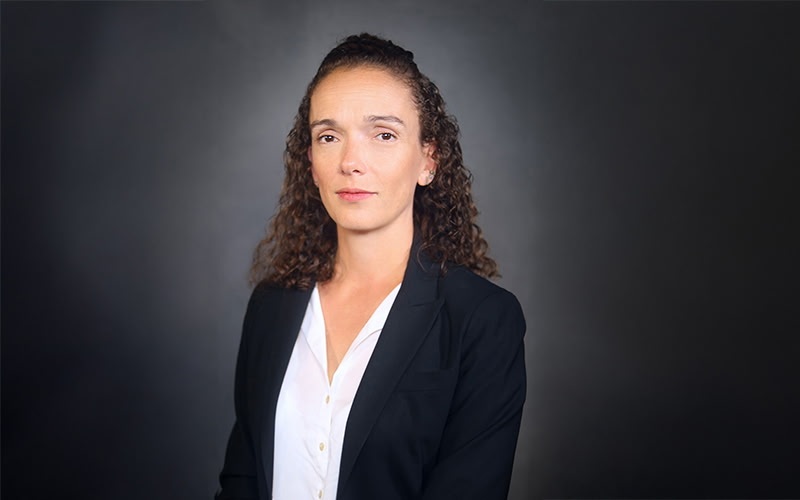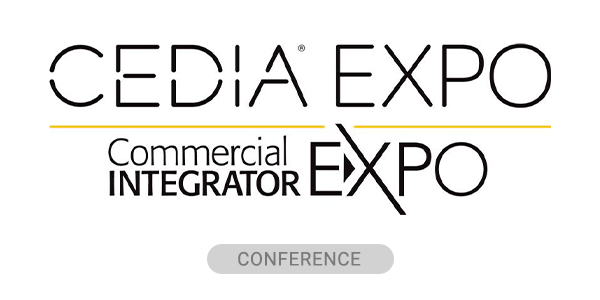As the Commercial Integrator #AVLivingLegends series roll on, we celebrate Rebecca Sullins, CTS-D, CTS-I, EAVA, DMC-E-4K, of AmpThink as our 76th inductee!
Sullins started her career in AV as a live audio engineer for the theater. She moved from there into engineering and design, focusing on large-scale stadiums, performing arts centers, and other production spaces. Currently, Sullins works at AmpThink as a senior design engineer who specializes in large, national projects.
Moreover, Sullins’ passion for the industry leads her to volunteer with multiple committees and to participate in educational opportunities throughout the year. She presently serves as AVIXA Women’s Council local leader for the Tennessee group.
In the interview below, Sullins discusses her achievements in the industry, including being the fourth woman in the world to attain all three CTS certifications, as well as the importance of constant learning in the AV industry!
Read on to learn more about Rebecca Sullins, our latest inductee in the #AVLivingLegends series! You can also check out our hub page for past honorees.
Interview with Rebecca Sullins
Commercial Integrator: What motivated you to join the commercial AV industry?
Rebecca Sullins: I started my career trajectory in love with the theater, and with a penchant for technology. And the place where those converged was sound design for live theater. I have always loved the overlap between intellect and beauty, and this became a natural environment for me. Eventually the logistics of life and working in a performance-related field forced me to look into other options.
Commercial AV was the perfect next step. I realized that as AV was beginning to be incorporated more and more into our every day lives, I had an opportunity to start shaping the literal world around us. Understanding the way human physiology interacted with sound and video meant that I was perfectly poised to make a real impact on people’s perception of technology.
CI: What has kept you motivated and engaged in the decades that followed?
Sullins: Everything! Honestly, I love watching the growth of the industry. We live in an unprecedented time of technological and scientific expansion, with new discoveries happening every day which allow us to make communication, immersion and human interaction easier. I got to see, in real time, the migration from analog to digital, from serial to networked, from bulky to sleek, and from a luxury to an everyday necessity. I have loved watching the AV portion of most projects go from being relegated to the sidelines to being one of the most important pieces in every building.
Additionally, I have loved watching the growth of the DEI movement. Our industry is based — on its most fundamental level — on human physiology. It’s literally all about the way we absorb and process information. But so much of our understanding of that processing is based on the relatively small demographic that’s typically represented in inherently flawed scientific studies.
Take audio for example. Every basic rule on audio system design revolves around rules that intrinsically favor 30-50 year old white male subjects. Women hear and create frequencies differently than men. Physical and ergonomic studies don’t take into account the differently-abled community. And even seemingly inconsequential differences in things like education level and socio-economic status can affect how people perceive inputs.
So, watching the industry as a whole begin to wake up to these shortcomings, and hopefully having a hand in making this a normalized conversation, really keeps me going.
CI: Reflect on your role as both a mentee early in your career and as a mentor later in your career. Who helped shape the trajectory of your professional life? How have you tried to help shape others’ careers?
Sullins: So many people have influenced me, it’s almost impossible to know where to begin. But I suppose the most important early influence on me was my college professor, David Smith. He was the head of the Sound Department at NCSA, where I studied sound design. He was really adamant about teaching the WHY behind what we were doing. Sure, it’s easy to go out and Google search for a prop candle, but understanding WHY it doesn’t look right because it’s flickering too fast is important information.
Figuring out that even though humans don’t HEAR rain until it hits the ground is vital information, so why do we want to hear it above our heads? These questions really bring to light everything we experience and WHY we experience it. And it is an inveterate part of who I have become.
Along the way, I have encountered people who have taught me technical information, how to deal with people, how to both see the good around me and how to improve it, and so many small lessons in between. And that’s a HUGE part of what I try to take with me every day. You don’t need to find a single mentor in this world, or in this industry. Look for lessons in every person you encounter. Everyone has something to teach you, whether you know it or not.
Why Mentorship Matters
As I have progressed into the mentor era of my professional career, I have tried to impart as much wisdom as I can. But one of the most important lessons I will ever give someone is to now be afraid to say when something is out of your wheelhouse. I understand so well the why behind all the areas that I’m passionate about, that I will go on about them for days, as anyone that’s ever had the misfortune of meeting me at the bar after one of my classes well knows. I can wax poetic about the physiology behind the Haas Effect so well I could put Haas himself to sleep. But I’ve also learned that it’s okay to point someone in another direction when I don’t understand the mechanism behind a phenomenon as well.
This might not be the right way to say this, but take advantage of everyone you meet for what they are best at.
CI: What’s the most memorable story/anecdote of your career in commercial AV?
Sullins: I still remember when I was doing a project in South America, Santiago. That project taught me more humility than any other I think I have ever done in my life.
I was a bid project, and I had to engineer the install documentation. One of the first things I realized is that 4 years of high school French does NOT translate into construction-level Spanish very well. I spent days and weeks on Google translate, and asking my native Spanish-speaking friends about the meaning of the terms. I spent a lot of time getting all my CAD templates and tools to work in metric. And I stared at the drawings until I was blue in the face trying to figure out why they weren’t making sense. There was just something about them that I couldn’t put my finger on.
One day, I was in my office, poring over a building section, when someone walked in and said, “Woah! They’re building this thing entirely underground?” And then it hit me. That’s what I was missing. There was no indicator that I was familiar with showing the terrain or dirt around the building, and with my translation issues, I missed that the top floor was at ground level, and the entire building was being built DOWN.
All it took was a second set of eyes. A different perspective, and suddenly everything snapped into place. There were so many things I learned on that project that taught me to take a step back, and look for the holes. Look for the places where things don’t make sense. Look for a perspective that you’ve never looked for before. And figure out what it is that you don’t even know you don’t know.
CI: What has been your greatest professional accomplishment to date?
Sullins: I don’t think that there’s been a single accomplishment for me. It’s been a series of small wins that collate into what I hope will leave a sizeable dent in the façade of homogeneity. I was the first female engineer at one of the biggest AV companies in the world, I was only the 4th woman in the world to receive all three CTS certifications, and the first to receive all four when the ANP was introduced. I spent whatever time I had at every company I have ever worked for doing my best to make our communication easier. Both by designing systems that take into account the needs and wants of the many, and by instituting standards and practices that better communicate intent and outcome to the people installing and using the systems.
CI: What has been your biggest professional regret to date?
Sullins: I try not to regret anything in life, nor in my career. I try to use everything I have done as a learning opportunity, as cliché as that is. But it’s also mildly ironic. Because if I could go back and do it all over again, I would learn more, and earlier. I wouldn’t have ignored the oncoming freight train of the IP convergence as long as I did. Instead of assuming that there would always be people out there to do that part for me, I would have grown my networking knowledge with as much fervor as I did my audio knowledge.
Same with acoustics. I wasn’t smart enough to see that changing trends in architecture would leave much of the acoustic design and troubleshooting in our lap. I would have found a way to stay in school for as long as I could to continue those few pieces of my education where I’m still working today to master.
CI: What’s the best advice or pearl of wisdom you either received during your career or came to realize on your own?
Sullins: There are two. The first I’ve discussed already, so I won’t belabor the point. But get back to the basics. Understand the why behind the things you are doing. Learn the mechanisms so that you can better understand the outcome. Most of the classes I teach these days harp on that particular subject pretty heavily.
And the second is just realize what you don’t know. Even the smartest person on the planet has holes in their knowledge simply because they haven’t experienced everything there is to experience.
Understanding Cultural Biases
Sullins: One of my other favorite quick stories was when we were doing an Executive Board Room at a large Japanese carmaker’s U.S. headquarters. This happened right when dual large-format displays were becoming the norm in these systems, and that’s what had been installed. Using the standards everyone was accustomed to, the camera had been installed below the displays, putting it at around 32 inches above the floor. I was the first woman to walk into the room and look around in indignation…because no one had thought of the fact that there would be women at this table, and sometimes women wear skirts. I suggested putting the camera above the displays. But it was brought to my attention that looking down on someone’s head in Japanese culture is considered taboo.
Both of these just show the gender or cultural or other biases that we all have. So it’s important to recognize your shortcomings, and find out how to fix them.
Would you like to nominate a peer or colleague — or perhaps yourself! — to be part of this #AVLivingLegends series? If so, just email Dan Ferrisi, [email protected].




